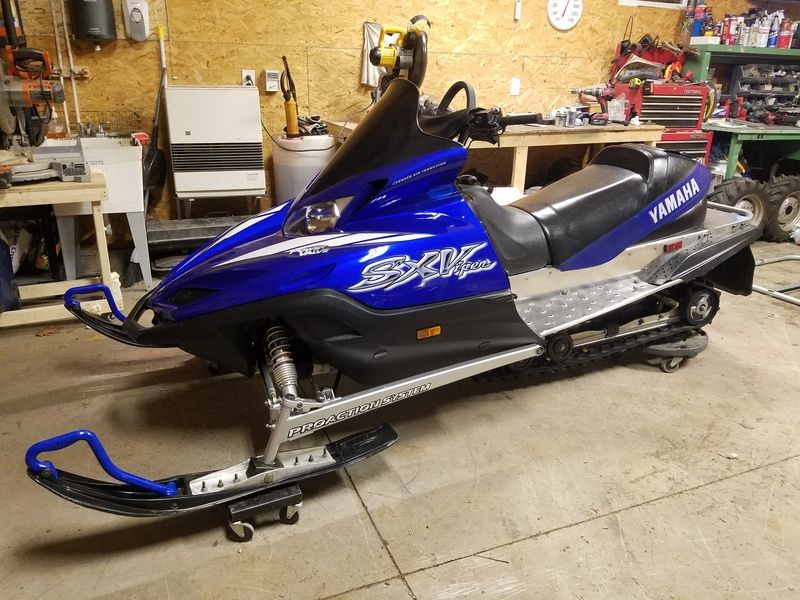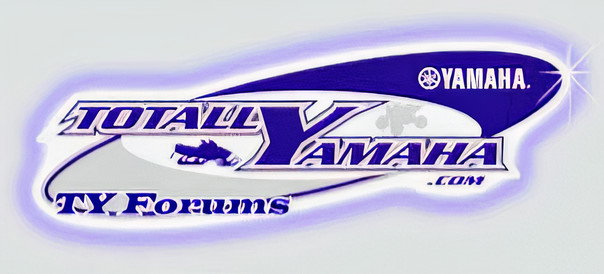You should check your motor mounts and install a dog bone that keeps the motor from moving.
I think my problem was the Dalton helix. I had no play in the secondary. Motor mounts are good. Been told about the srx mount but was hoping to get by without it. Looking at making this a backup sled for next year.
I'm concerned I'm going to blow belts again. My secondary was tight with no play after installing the Dalton helix. Stock it had some room to move, I've removed 2 spacers to get it free floating again but I'm wondering if I should remove more, to allow more movement? Is to much movement bad?
2 brand new yamaha 8dn belts that have been washed and scrubbed.
I have no idea what you have going on there, I have used Dalton helix for over 10 years, and not once have I installed one and had the side movement of the sec. clutch changed.
I mean no insult in what I am about to say... but looking at the amount of issues you are having, maybe it would be best to remain totally stock as if you don't know how to set this stuff up your just punishing yourself with the struggle and cost you lots of money. I have had literally hundreds of guys use these set ups and never have had problems like you have had. Blowing belts is either from wrong clutch alignment, high belt speed, incorect installation. You gotta have a offset tool if your gonna start pulling shims to align the clutchs, this will lead to blown belts if wrong. Like I said not trying to insult you but look at the amount of problems you have had in this thread, its like nothing I have ever seen before.
Honestly it's been a struggle. I've been riding sled for a long time and I'm mechanical. I work on cars as a side business, I'm an electrician by day. I've never had these issues before, I tinker on everything I own. I am seriously striking out on this venture. I'll know more this week after my trip. Bringing my other sled which is a backup, much newer, and stock.
The original belt that blew was a gates at 106 mph on a 3 mile pull. What I didn't know was that I lost a clutch bushing when it let go. I put an old yamaha belt on and got about 20 miles in and that let go. Drive ability was poor and I should have stopped to see why but I didn't want to slow the group down.
I bought this sled wrecked. Rebuilt the motor, stretched it out, new track, rear skid, and reverse kit.
On paper I may look like some armature playing with his clutch, but it's quite the opposite. A run of bad luck is more fitting.

The original belt that blew was a gates at 106 mph on a 3 mile pull. What I didn't know was that I lost a clutch bushing when it let go. I put an old yamaha belt on and got about 20 miles in and that let go. Drive ability was poor and I should have stopped to see why but I didn't want to slow the group down.
I bought this sled wrecked. Rebuilt the motor, stretched it out, new track, rear skid, and reverse kit.
On paper I may look like some armature playing with his clutch, but it's quite the opposite. A run of bad luck is more fitting.

Last edited:
Batwolf
Member
Don't get discouraged! You will figure out the right combination you need.
that wasnt quite what i was getting at,most guys get sold 1/2 the setup aka heelclickers/ i was asking when you test a setup yourself how do you find the right multi helix to use from scratch?but most would figure out its not hitting rpm and it cant pull the straight 47.so what decides the selection for finish angle and start angle?i mean is it exact and critical to 48/36 or 48/34 or can you deviate as long as you keep the start or the finish?like i have a micro belmont 48/40 or i have a 43/37 bender would this setup still work?the second part of my question was say he had a pile of stock straight helixes 45 41 39 say he gets to the 39 and it pulls it good . should that be the max finish angle on the setup?or anything under that is ok?i mean theirs so many helix angles what helps you select the correct one?~thanks smoke
Got it. 3.3 tip 3.3 heel gray spring 46/36 helix pulls 8600 rpm and goes like heck. Stock rollers. 3.3 tip, 3.3 mid, 3 3 heel got me 8200 ish rpm for reference. 60 degree secondary twist. Every sled is different.
Last edited:
Got it. 3.3 tip 3.3 heel gray spring 46/36 helix pulls 8600 rpm and goes like heck. Stock rollers. 3.3 tip, 3.3 mid, 3 3 heel got me 8200 ish rpm for reference. 60 degree secondary twist. Every sled is different.
well if your happy with it, run it. your at the correct rpm so go with it!
I will explain why you came up with the different rpm from your set ups.
1.) The red spring is 230/360, the gray spring is 230/330, so they have the same engagement speed because they have the same energy at the start but its the shift/peak rpm that will be different. The red will require more weight in the clutch arm to run the same rpm as the gray. This is because the red spring is stiffer and it takes more weight to overcome it to shift, the gray being softer will upshift faster then the red but will lower/drop rpm doing so, require less weight in the arms to run same rpm as red. The softer your primary spring is the heavier the weights or arms "act" is a easy way to put it.
2.) with only 60 degree twist on the sec spring it will lower rpm. I suggest the stock red sec spring at 80 degrees twist, as much lower when you encounter wet snow,heavy snow, very good traction or more load the clutch wont be able to hang onto the belt and will overshift, resulting in dropping rpm. The red sec.spring has proven to be faster mph on top then a green is. The green dot sec. spring is able to run a lower twist setting like your 60 degrees because its a stiffer rate spring. I tested with a radar gun and the red at 80 will produce the best mph and has adequate tension to hang onto the belt in different load conditions riding the sled.
that wasnt quite what i was getting at,most guys get sold 1/2 the setup aka heelclickers/ i was asking when you test a setup yourself how do you find the right multi helix to use from scratch?but most would figure out its not hitting rpm and it cant pull the straight 47.so what decides the selection for finish angle and start angle?i mean is it exact and critical to 48/36 or 48/34 or can you deviate as long as you keep the start or the finish?like i have a micro belmont 48/40 or i have a 43/37 bender would this setup still work?the second part of my question was say he had a pile of stock straight helixes 45 41 39 say he gets to the 39 and it pulls it good . should that be the max finish angle on the setup?or anything under that is ok?i mean theirs so many helix angles what helps you select the correct one?~thanks smoke
to address the first part, I have about 15-20 helixs of different angles and spreads on my wall I use for testing purpose. I begin with a ballpark helix guess from personal prior set ups to work towards my target rpm. Its usually evident by the way the engine reacts and the way the tach sweeps if I am heading in the right direction or the wrong one. I change the helixs and then change the weight in the cam arms and sometimes the primary springs depending on the weights used to get a smooth straight shift to peak rpm. Once all this is done it gets tested with radar in a long testing field I have here. Clutch heat is checked and various other things such as belt marking, backshift ability,etc. Then, more tweeks are made then tested in trail riding for example if that's what kind of set up is being done. Racing set ups are checked with radar gun, timers and gps as well sometimes. This is then recorded in a book I keep, so I can refer back to a set up and I know what the result will be, what kind of set up on the sled and any parts needed to be changed to get to that goal.
second part: you can make about anything work, maybe even hit your target rpm, but.... if say you use a steep finsih angle helix with h/c weights,it likely will not be the best performing set up.
A good example might be you can tune your viper and I tune mine, we both have basicly the same sled lets say, same studs, same track,etc. .Now set up we both hit target peak rpm. Line those 2 sleds up and 1 of them will do something better or worse then the other. One might be faster in a drag race by as much as say 2 sled length. The other one might post a bigger top speed mph but loses a drag race. Even though both hit the target rpm they will not be the same due to the actual set up used in each. One might also slip the belt a little or make more heat in the clutch then the other one will, resulting in shorter belt life.
((heat is your number one clue you do not have a efficient set up even though you may have the target rpm, if you cant hold your hand on the clutch after riding it hard, without yanking your hand off because its hot, it needs work somewhere,either the front clutch or the back))If you look in the tech section I think I already have a few threads on this and even some on heel clicker basics.
This very thread is a example of how the guy has a different set up, he hits target rpm( that's the goal to hit target rpm) but it will perform differently from what I suggested to him as he used a different combo of parts and set weights up differently, different spring wrap, different spring tension, etc. as long as he is happy with it in his riding scenario and conditions, its fine.
Very well put. I have had a blast tuning this sled.
If i go 80 degree twist it sounds like I will need more weight, either in tip or mid, correct? I did 101 miles today on this setup and it works great. Some off trail riding and some flat groomed straight runs. Thanks for all of your input, it's been a great education.
If i go 80 degree twist it sounds like I will need more weight, either in tip or mid, correct? I did 101 miles today on this setup and it works great. Some off trail riding and some flat groomed straight runs. Thanks for all of your input, it's been a great education.
Last edited:


